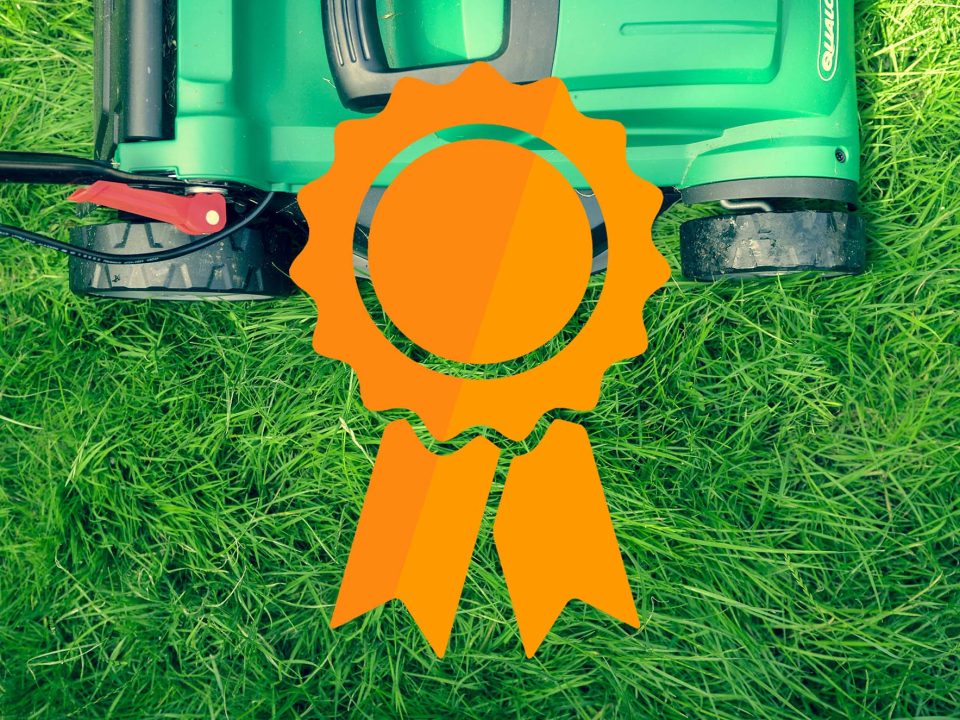
How to Choose Safe Lawn Fertilizers for Pets
October 22, 2024
Achieving the Perfect Lawn with Top Lawn Care Company in Dublin, Ohio
December 14, 2024How Natural Lawn Care in Ohio Can Transform Your Lawn Without Harmful Chemicals
Natural lawn care in Ohio is more than just a trend. It's a sustainable approach to maintaining your lawn without resorting to harmful chemicals.
But what does it entail?
Natural lawn care focuses on nurturing the soil, promoting biodiversity, and using organic methods to manage pests and weeds. It's about working with nature, not against it.
For homeowners in Dublin, OH, and across the state, this approach can transform their lawns. It can create healthier, more resilient green spaces that are safe for families, pets, and the environment.
This guide will show you how to implement natural lawn care practices in your Ohio home. It will provide practical advice, highlight the benefits, and debunk some common myths.
Ready to start your journey towards a greener, healthier lawn? Let's dive in.
Understanding Natural Lawn Care
Natural lawn care involves using techniques that align with nature's processes. It's about enhancing the health of your soil and lawn ecosystems without synthetic chemicals.
This method relies on organic materials and practices that promote a sustainable, thriving lawn. Healthy soil supports robust grass growth, minimizes pest issues, and reduces the need for constant maintenance. It's an approach that encourages biodiversity and resilience, tailored to Ohio's unique climate conditions. By adopting natural lawn care, you're investing in a healthier environment for both the land and its inhabitants.
The Environmental and Health Benefits of Going Organic
Switching to organic lawn care greatly reduces environmental harm. Traditional lawn treatments often include chemicals that seep into waterways. These chemicals can harm aquatic life and reduce biodiversity. By choosing organic methods, you contribute to cleaner local ecosystems.
Organic lawn care also protects your family's health. Chemical pesticides and fertilizers can pose risks to children and pets. Physical contact or inhalation can lead to various health issues. By eliminating these substances, you create a safer outdoor space for your loved ones.
Additionally, using organic materials nourishes the soil, leading to healthier grass and plants. A robust lawn naturally suppresses weeds and pests. Here are some key benefits of going organic:
- Reduces chemical runoff into water bodies
- Minimizes health risks for families and pets
- Enhances soil quality and promotes biodiversity
- Supports natural pest and weed control
Key Components of Natural Lawn Care in Ohio
A thriving lawn in Ohio begins with understanding the basics of natural lawn care. Key components include soil health, grass selection, organic fertilization, and proper mowing and watering techniques.
Each element contributes to a sustainable lawn that withstands Ohio's variable climate. Focusing on these fundamentals helps reduce the need for synthetic chemicals, fostering a more eco-friendly and healthy environment.
Soil Health: The Foundation of Your Lawn
Healthy soil is vital for a resilient lawn. Ohio's soil types vary, but they all benefit from organic amendments. Compost and mulch enrich the soil, improving its texture and fertility.
Enhancing soil health promotes deeper root growth and better moisture retention. This organic approach ensures your lawn stays lush throughout the seasons, even during dry spells.
Choosing the Right Grass for Ohio's Climate
Selecting grass suited for Ohio’s climate saves time and resources. Native grasses are more adaptable to local conditions, requiring less water and maintenance.
Consider species like Kentucky bluegrass or fescues for their resilience. These varieties thrive in Ohio’s weather, contributing to a robust lawn with minimal effort.
Organic Fertilization and Natural Weed Control
Using organic fertilizers is essential for a chemical-free lawn. Natural options include compost tea, bone meal, and blood meal. These enrich the soil, ensuring robust grass growth over time.
Weed control can also be managed naturally. Techniques like maintaining a thick lawn cover and manual weeding help keep unwanted plants at bay. Here are some natural strategies:
- Use organic fertilizers like compost tea
- Maintain dense grass coverage
- Opt for manual weeding
The Importance of Mowing and Watering Practices
Regular mowing at the right height strengthens your lawn. Cutting grass too short stresses the plants, making them susceptible to pests and diseases. Keeping grass longer supports healthier root systems.
Watering practices are also critical. Deep, infrequent watering encourages root development. This method conserves water and ensures your lawn remains green and vibrant, even in dry periods.
Attracting Beneficial Insects and Managing Pests Naturally
Beneficial insects, like ladybugs and lacewings, play a crucial role in natural pest control. These insects prey on harmful pests, reducing the need for chemical treatments. By planting diverse flowers and shrubs, you can create a welcoming habitat for these helpful insects.
Integrated Pest Management (IPM) offers a holistic approach to pest control. It involves monitoring pest levels and applying natural remedies as needed. Regularly inspecting your lawn and encouraging natural predators can maintain a healthy balance and minimize pest issues effectively.
Transitioning to Natural Lawn Care: A Step-by-Step Guide
Switching to natural lawn care requires patience and planning. Follow these steps to ensure a smooth transition. Begin with assessing your current lawn health and developing a plan.
Steps to Transition
- Assess current soil and lawn condition.
- Gradually reduce chemical fertilizers and pesticides.
- Introduce organic fertilizers and natural pest solutions.
- Implement natural mowing and watering practices.
- Monitor lawn health and adjust practices as needed.
Conducting a Soil Test
Understanding your soil's composition is essential for effective natural lawn care. Conduct a soil test to identify nutrient levels and pH balance. Use this information to tailor your organic lawn care plan.
Collect soil samples from various lawn areas for accurate results. The test results will guide you in making the necessary adjustments to promote a lush, healthy lawn.
Adjusting pH Levels and Improving Aeration
Soil pH impacts nutrient availability for your lawn. If pH levels are unbalanced, use natural amendments like lime or sulfur to adjust them. Proper pH ensures your grass can absorb nutrients effectively.
Aeration enhances root growth and overall lawn health by improving soil structure. Regular aeration helps alleviate soil compaction, allowing air, water, and nutrients to reach the roots efficiently.
Seasonal Lawn Care Tips for Ohio Residents
Ohio's climate demands seasonal adjustments in lawn care practices. Each season presents unique challenges and opportunities for maintaining a healthy lawn.
Adapt your lawn care routine to align with Ohio's distinct weather patterns. Consider the following tips to ensure year-round lawn vitality:
- Spring: Aerate your lawn and apply organic fertilizers.
- Summer: Water deeply but infrequently; mow higher to shade roots.
- Fall: Overseed and add compost to enrich the soil.
- Winter: Minimize foot traffic on frozen grass; plan for spring tasks.
Local Resources and Support for Organic Lawn Care in Ohio
Ohio offers numerous resources for homeowners interested in organic lawn care. Local garden centers and nurseries often provide advice and organic products suited to Ohio's climate.
Connect with community organizations and workshops dedicated to sustainable lawn care. These groups share valuable expertise and foster a community of eco-conscious lawn enthusiasts.
Conclusion: The Future of Lawn Care in Ohio
The trend towards sustainable lawn care in Ohio is growing steadily. Homeowners are increasingly embracing natural methods.
As awareness spreads, more Ohio lawns will thrive without harmful chemicals. This change benefits both the environment and the residents, ensuring healthier communities across the state.




